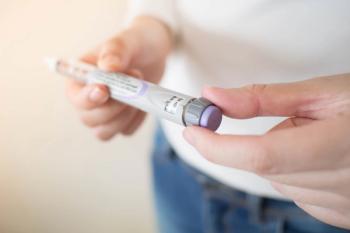
- Drug Topics November 2019
- Volume 163
- Issue 11
The Vaping Crisis: Counseling Patients
Direct and concise information will dissuade dangerous use.
As the vaping crisis continues, pharmacists are being called upon in growing numbers to help counsel patients about recent deaths and how individuals can protect themselves. Research into the pathology of vaping-associated lung injury is in its infancy. However, a
Researchers at the Mayo Clinic reviewed lung biopsies from 17 patients, all of whom had vaped and were suspected to have vaping-associated lung injury. The study found no evidence of tissue injury caused by accumulation of lipids, which had been suspected as a possible cause. In recent months, CDC has received almost 2,000 lung injury reports associated with vaping and dozens of deaths.
Trending:
He says electronic cigarettes were designed to deliver nicotine, and the nicotine content in vapors can be as high and often higher than combustible cigarettes. Other chemicals he says are common in these products are propylene glycol and glycerin-solvents for nicotine and flavorings.
“A growing literature has shown that e-cigarette exposure causes acute inflammation, injury, oxidative stress, and other toxicities in the lung,” says Ferkol.
Vaping among American middle school and high school students is also on the rise. Ferkol cites preliminary data reported by the National Youth Tobacco Survey which shows continued increase among high school students: 30-day nicotine vaping rates are at 28% this year, compared to 21% last year and 12% in 2017. “The warning signs for chronic [e-cigarette] use are the same as those seen in nicotine addiction. In addition, bronchitic symptoms have been associated with e-cigarette use in adolescents, manifested as a persistent, daily productive or ‘wet’ cough for several weeks,” says Ferkol.
Changing Laws
Recent deaths and illnesses linked to vaping prompted New York in September to become the first state to ban flavored e-cigarettes; since then other states have imposed temporary bans on the sale of e-cigarettes or the flavored
liquids used in them until more is known. The CDC
Read More:
Many young and pregnant women are using e-cigarettes as a safer alternative to smoking, but little is known about the effects on fertility and pregnancy outcomes. In a mouse model, researchers at the University of North Carolina at Chapel Hill found that e-cigarette usage prior to conception significantly
Articles in this issue
about 6 years ago
Train Staff on New Technology: Tips for Pharmacy Managersabout 6 years ago
What Pharmacists Need to Know About Migraineabout 6 years ago
How Diabetes Care Is a Business Opportunityabout 6 years ago
How Pharmacists Can Help Rheumatoid Arthritis Patientsabout 6 years ago
Are You Ready for Pharmacy Inspection?about 6 years ago
Senior Medication Management: Helping a Vulnerable Populationabout 6 years ago
Vaccination Programs Bring Pharmacy Profitsabout 6 years ago
The Future of Pharmacy Chainsabout 6 years ago
Chains Implementing Tech to Help Track Opioid Misuseabout 6 years ago
CDC, Retailers Urge Flu Vaccine Due to Early SeasonNewsletter
Pharmacy practice is always changing. Stay ahead of the curve with the Drug Topics newsletter and get the latest drug information, industry trends, and patient care tips.























































































































